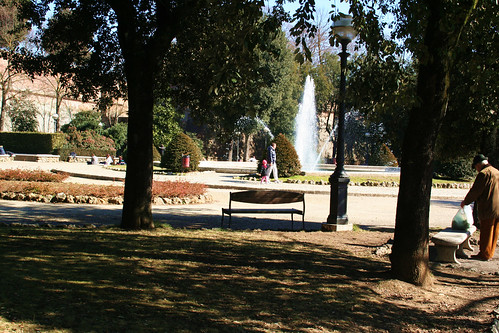
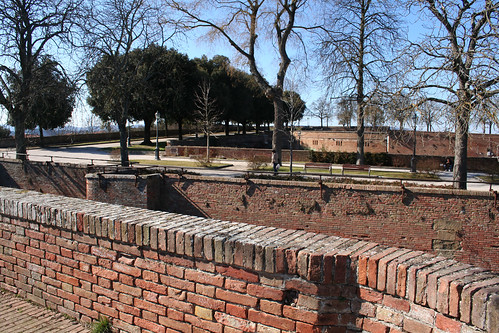
Merchant stalls surrounded the ancient brick walls like the camp of an army laying siege, selling everything from clothes and shoes to kitchen utensils to beautiful meats, cheeses, fruits, and vegetables.

(I was much more interested in the latter.)
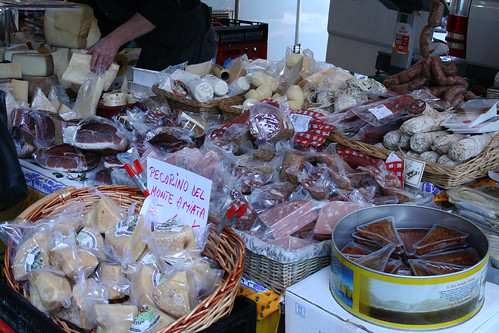

The fortress was built in the 1560s by order of Cosimo I de' Medici after his Florentine forces conquered the city. With its perimeter of over one kilometer, it's a popular spot for walking and jogging, as well as picnicking. I love to pick up a sandwich from a nearby bar or a bit of fruit and cheese from the market just across the bridge, and eat with a view of the majestic Tuscan hills or the city's three great towers.
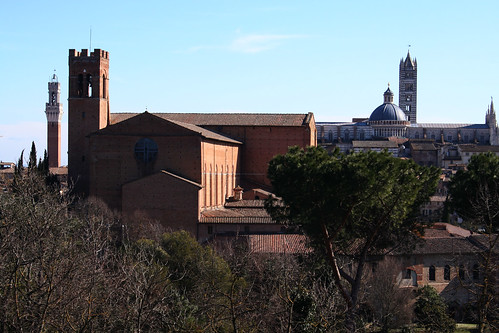
My friends and I wandered back through town and parted ways at the Duomo, which I'd seen last year but wanted to visit for a second time.
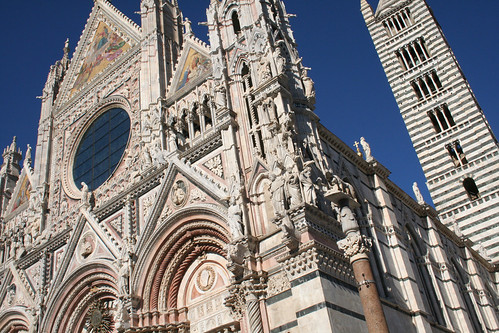
One of my classmates asked me an impossible question: between the Duomo of Siena and that of Florence, which one do I like better?

I think I prefer the exterior of Santa Maria del Fiore, with its pastel colors and gentler Renaissance architecture. Siena's intensely Gothic façade and bold black-and-white stripes are a little too jarring for me.
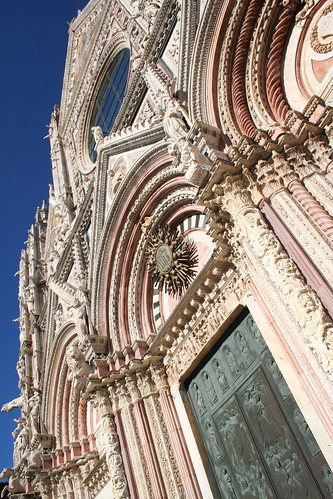
Doesn't stop me from photographing the heck out of it, though.
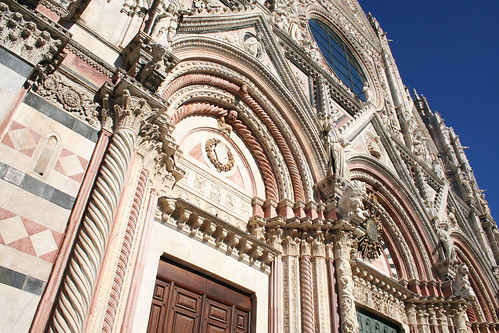
The structure is mostly 13th-14th century Gothic, influenced by what was then quite fashionable in France. Note the similarities between this facade and that of Notre Dame, particularly on the upper levels. (The Duomo's first story, begun in 1215 and worked on until just before 1300, is more Romanesque, while the upper stories and the belltower were designed in the early 1300s.)
If you read my blog last year and are currently going, “but wait, this all looks so familiar!”, then you are right. I featured several shots from Siena's Duomo last year. That day, however, my camera battery died partway through the trip, so this year, I have taken pains to ensure that you'll get to witness as much of the Duomo as possible!

I mentioned before that I prefer the outside of Florence's cathedral to Siena's, but the reverse is true inside. While there is something to be said for the contemplative simplicity of Santa Maria del Fiore's interior (Siena's San Domenico is similar, and it's one of my favorite cathedral interiors), the tightly-woven complexity of Siena's really comes together for me. It is order just bordering on chaos, it's a bold celebration of contrast.

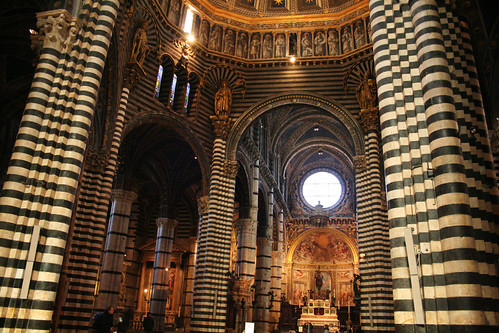
The interior includes works by Michelangelo, Duccio, Donatello, Nicola and Giovanni Pisano, Bernini, Pinturicchio, and still others.
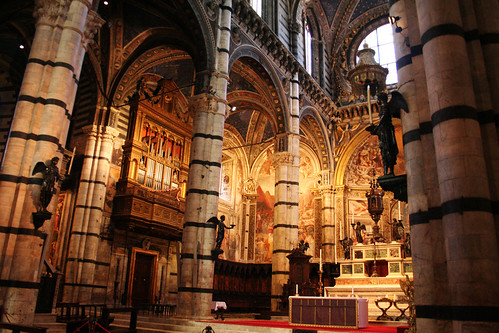
From the Museo dell'Opera del Duomo, you can climb up to a vantage point on the wall of what might one day have been the new façade, if not for the bubonic plague. The Senese intended to expand the existing cathedral to fill the entire piazza, making it the largest church in Europe (and more importantly, larger than that in Florence); after the plague, the project was abandoned, the populace fearing that the plague was punishment for their hubris.
In addition to another lovely view of the countryside, this place gives you an excellent angle on the cathedral itself.
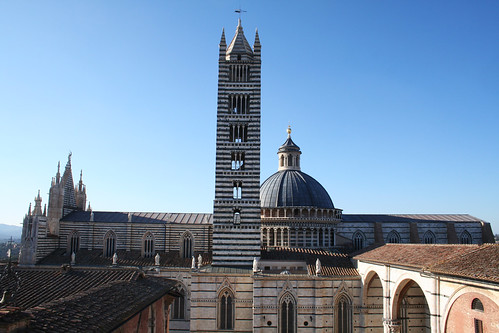
Note the changing widths of the white stripes on the bell tower. From ground level, this creates the illusion that the tower is much taller than it actually is.
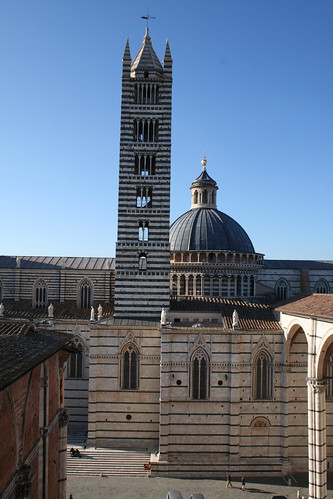
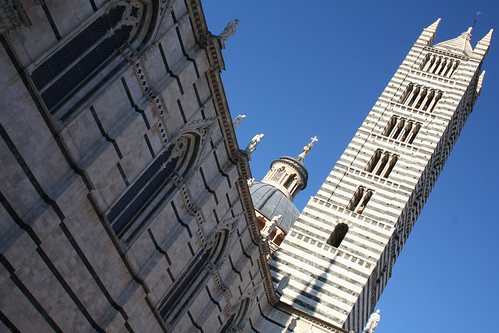
Later, I returned to Piazza del Campo to people-watch and get a bit of sun.
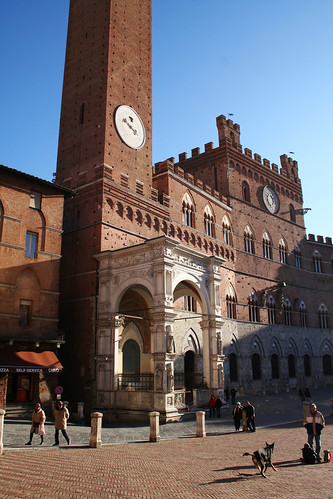
Next up: San Domenico, and a day trip to San Gimignano!

No comments:
Post a Comment